WHAT'S HAPPENING
AN ANNUAL CONFERENCE IN NEW YORK ON THE CARE OF THOSE WITH INTELLECTUAL AND DEVELOPMENTAL DISABILITIES
BY VINCENT SIASOCO, MD, MBA
No rewards come without their challenges. It has been well documented that there's a dearth of available education and training for healthcare professionals on how to care for those with intellectual and developmental disabilities. Up until now, most medical school curricula still do not require special needs training and education as a required topic.
For the medical resident, there are not many opportunities (before they go out on their own and practice) to do a rotation in which to gain experience with the intellec tually and developmentally disabled patients. For the parent, the process to find a physician or dentist who has the background, experience, or even just the willingness to see their child with special needs can be an arduous one. Hiring a provider can be just as difficult. Resumes are received and reviewed with the understanding that most will not have this type of experience listed. Those that do, stand out as a shining light and give hope, regardless of how many years of experience they have, or even in what capacity they've previously worked with this population.

A ROBUST SHOWING: It is comforting to know there is now an established Multi-Disciplinary Clinical Conference on the Care of Patients with Intellectual and Developmental Disabilities held every fall in Saratoga, New York. The audience doubled this year from last year, and as before, the audience was made up of physicians, dentists, clinicians, nurses, and administrators.
For the practicing healthcare provider, depending upon their discipline, one is required to maintain a regular amount of continuing education credits on an annual basis which can be obtained by attending a clinical conference. For students, residents, and working clinical professionals, there are occasional opportunities to attend a conference focusing on the care of patients with intellectual and developmental disabilities but these conferences are rare within New York. Each year begins a new search for this type of educational opportunities.
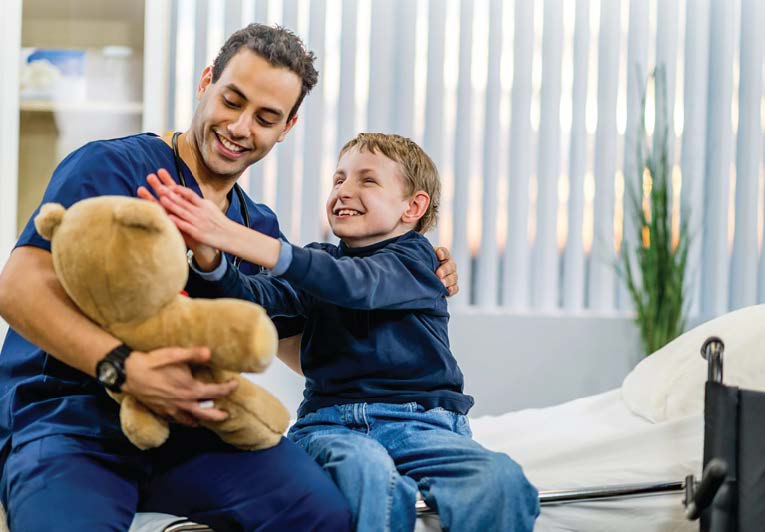
SCANT CHANCES: Most medical school curricula still do not require special needs training and education as a required topic, and there are few opportunities for medical residents to do a rotation in which to gain experience with the intellectually and developmentally disabled patients.
Two years ago, Dr. Maria Kansas and I, Co-Chairs of the Cerebral Palsy Associations of NYS Medical Director's Council and their organizer, Deb Williams, came together to present to their Council members the idea of putting together a one-day multi-disciplinary clinical conference. Council members, made up of representatives from each of the over 20 health centers and clinics affiliated with CP Associations of NYS across the state, immediately and unanimously agreed that this is what needed to happen and a Conference Planning Sub-committee was formed. The Council discussed and identified the most common clinical conditions seen by healthcare providers at the health centers as well as in the group homes across the state. It was important to all that the need for integrated care was to be emphasized and the idea of panel discussions made up of different disciplines were favored to present at the conference. Over the course of a few months, the Conference Planning Sub-committee held conference calls, shared emails, reached out to hospitals, schools, providers, and community stakeholders to get their input and identify speakers as well as vendors to sponsor. Applications to be able to offer continuing educational credits of different disciplines were completed. It was a true grassroots effort. Most of the organizers had all attended conferences, however none of us had actually put together a conference with the exception of one – Deb Williams. Deb Williams' actual day job is as the VP of Reimbursement and Regulatory Compliance of CP Associations of NYS. Regardless, she took on the roles of organizer, facilitator, and task master working closely with the Planning Committee to transform this idea of a one-day multi-disciplinary clinical conference a reality.
On November 16, 2018 our simple idea came to fruition and our Council held the First Annual Conference on Multi-Disciplinary Clinical Care for Patients with Intellectual and Developmental Disabilities in Saratoga, N.Y. The Co-Chairs welcomed everyone in the audience to one of the first annual meetings of its kind in New York. Fast forward to a year later; we now just finished holding our second annual conference last November 15.
Our topics continue to include the most commonly-seen clinical conditions within the special needs patient population, such as constipation, how to avoid fecal impaction, dysphagia, how to avoid aspiration pneumonia, osteoporosis, and highlighting the importance of oral health and primary care/behavioral health integration. This year, we added the important topic of aging and dementia. The audience doubled this year from last year, and as before, the audience was made up of physicians, dentists, clinicians, nurses, and administrators. Audience members included not only those with extensive experience with this population but, more important, those just wanting to learn more as they near their graduation and start their careers. Though we couldn't include all the needed topics in a one-day conference, it's comforting to know there is now an established annual Cerebral Palsy Associations of NYS Medical Director's Council Multi-Disciplinary Clinical Conference on the Care of Patients with Intellectual and Developmental Disabilities held every fall in Saratoga, New York that all can learn from.
ABOUT THE AUTHOR:
Vincent Siasoco, MD, MBA, is a family Physician and Chief Medical Officer at the Metro Community Health Centers, Inc. based in NYC.
E-CIGARETTES, JUULS, AND VAPING
BY NEVIN ZABLOTSKY DMD
E -cigarettes are electronic nicotine delivery systems which usually have a battery, heating element, and a place to hold a liquid. They produce an aerosol by heating a liquid that usually contains nicotine, flavorings and other chemicals to make the aerosol. The increase in the number of kids, teens, and young adults using e-cigarettes and Juuls is frightening. In the past year alone, there has been a 78% increase in high school students vaping, with the number of middle and high school students combined equaling 3.6 million users. Individuals with intellectual and/or developmental disabilities may be especially vulnerable to the deleterious effects of tobacco use, vaping products and dependence. Given that 40 million people use E-cigarettes worldwide, the likely impact on this population on a global level is great.
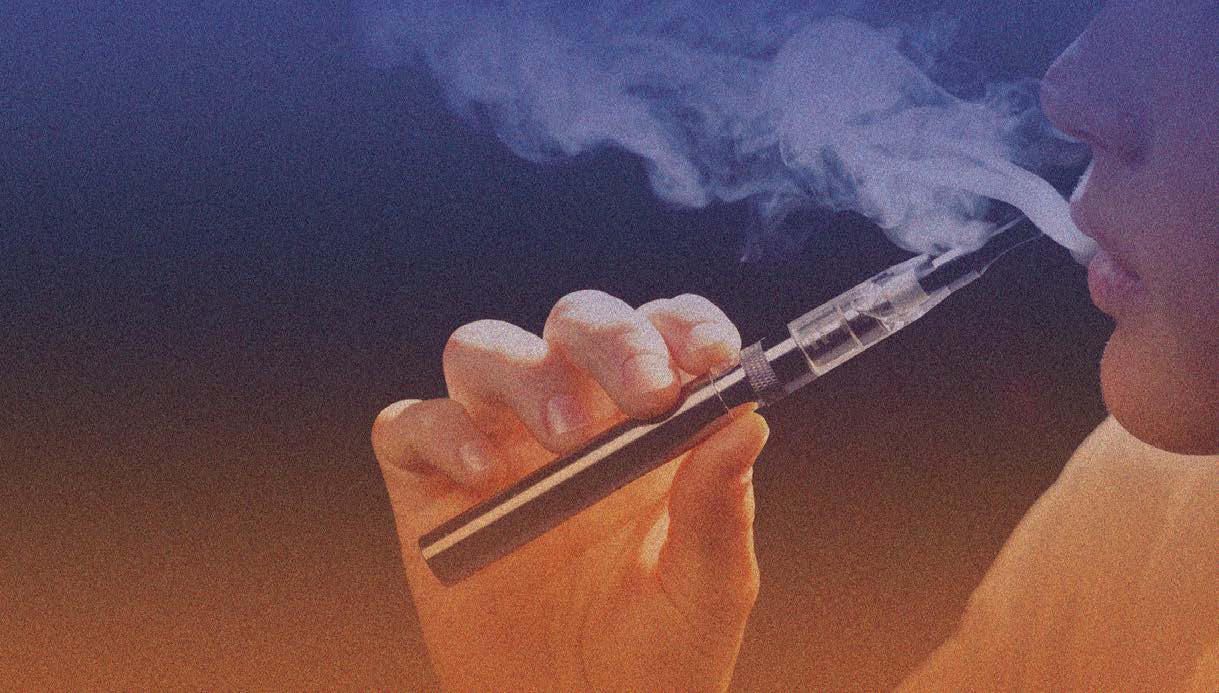
SMOKE AND MIRRORS: Individuals with intellectual and developmental disabilities might not be able to judge how potentially addictive the use of e-cigarette products are.
Part of the allure of these products can be attributed to the vast array of flavors offered, such as mint, mango, gummy bear, and cotton candy. In fact, researchers have identified that 97% of kids vaping use flavored products, with mint being the most popular. The C.D.C also noted that 39% of kids, teens, and young adults using e-cigarettes were exposed to family or friends using them, and 17.1% thought that given they were less harmful than cigarettes, they were safe. In fact, many young people were unaware that e-cigarettes and Juuls contain the addictive ingredient, Nicotine. It is likely that given the prevalence and advertising of these products, people with intellectual disabilities are equally, if not more vulnerable, to begin to use these products as well.
The latest research has shown that Juul e-cigarettes have a modified nicotine salt molecule that is absorbed almost as readily as cigarettes. They also have a diminished harshness on inhaling their aerosol, which allows new users to more readily become hooked. Juul e-cigarettes also have up to 5% nicotine content which is more than double of that of most e-cigarettes, with one of their pods equaling the same nicotine content as a pack of cigarettes. The latest C.D.C statistics show that 2,290 cases have been reported of e-cigarette, vaping, and lung injuries (EVALI) in 49 states, the District of Columbia, and Puerto Rico and the Virgin islands, and 45 deaths ranging from the ages of 17-75.
ABOUT THE AUTHOR:
Nevin Zablotsky D.M.D., is a Senior Consultant and Lecturer for Nova Southeastern University College of Dental Medicine.
UP IN SMOKE : IMPORTANT E-CIGARETTE TAKEAWAYS
What are some important takeaways that parents, coaches, and healthcare professionals should consider in regards to these products?
- 1. E-cigarettes and Juuls are unsafe for children, young adults and vulnerable adults.
- 2. Nicotine can harm the brain as it continues to develop through one's early to middle 20 years of age.
- 3. E-cigarettes and Juuls may contain other harmful substances.
- 4. Statistics show that young people who use e-cigarettes are more likely to go on to smoke cigarettes in the future.
- 5. Individuals with intellectual and developmental disabilities suffer from the health, financial, and the stigmatizing effects of tobacco use including vaping products.
- 6. The use of tobacco products can reduce the effects of certain medications used by individuals with intellectual disabilities. 7. Learn where and whom to refer those already addicted to these products to help them break their addiction.
- 8. Safety: E-Cigarettes, Juuls, and Vaping product devices have been known to cause fires and explosions and require great caution in their use.
- 9. The dangers of second-hand vapor have just begun to be studied but according to the C.D.C. volatile organic compounds such as benzene, which is found in car exhaust; and heavy metals, such as nickel, tin, and lead' may threaten those breathing in the aerosol.
- 10. That a recent study also showed that the residues from the aerosols emitted by e-cigarettes may settle on indoor surfaces in homes where they are used, which may create a potential environmental hazard.
- 11. That Individuals with intellectual and developmental disabilities might not be able to judge how potentially addictive the use of these products are.
PROJECT ACCESSIBLE ORAL HEALTH: A CATALYST AND CHAMPION FOR CHANGE
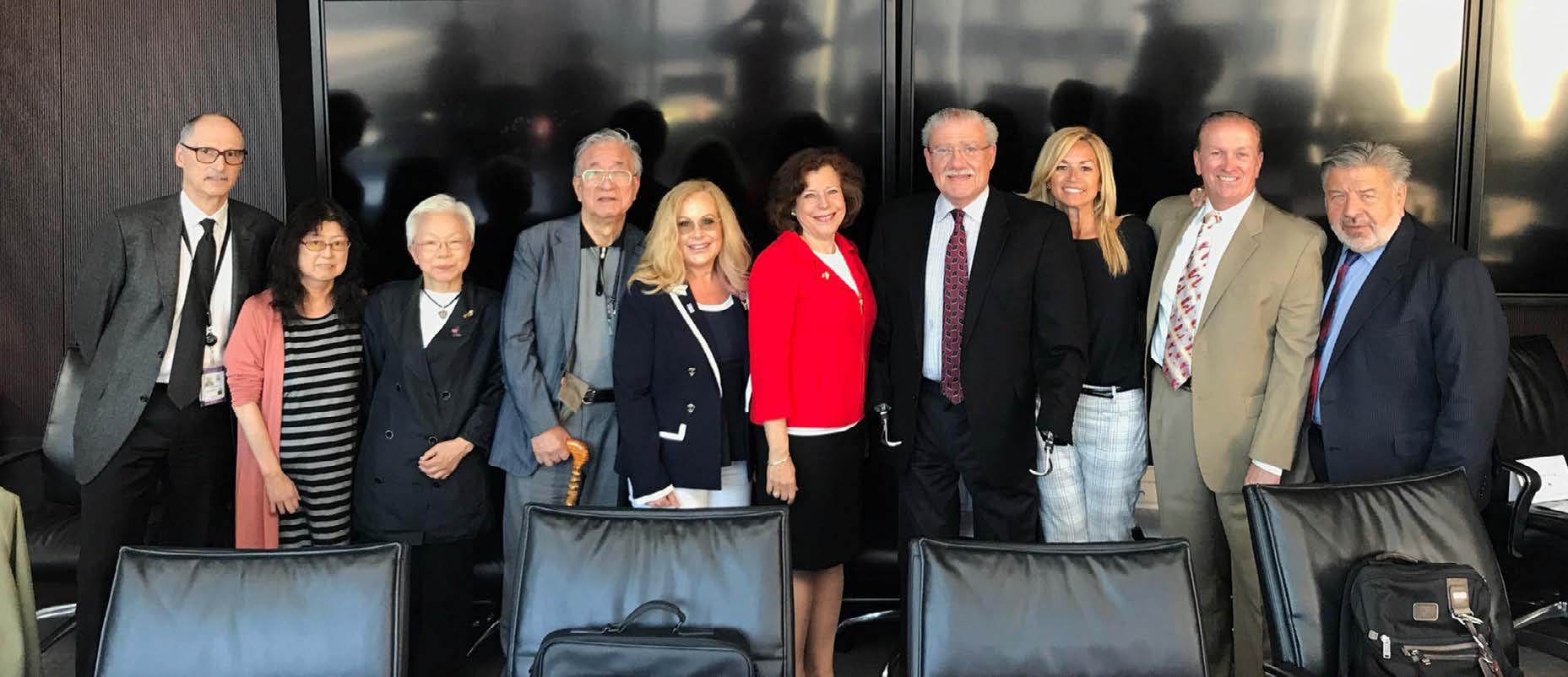
CHANGE AGENTS: Dr. Robert Glickman, Michiko Toda, Dr. Kyoko Kuroiwa, Dr. Takehiko Kata, Guest & Deborah Weisfuse, John D. Kemp, Barbie Vartanian, Dr. Michael O'Connor and Steve Kess following a meeting at the NYU College of Dentistry
BY BARBIE VARTANIAN
In 2017, three people of influence, John D. Kemp, President and CEO, The Viscardi Center and Chairman, Project Accessible Oral Health; Steven W. Kess, Vice President of Global Professional Relations, Office of the Chairman & CEO, Henry Schein, Inc., Founding President of the Henry Schein Cares Foundation; and Dr. Mark S. Wolff, DDS, PhD, Morton Amsterdam Dean, University of Pennsylvania School of Dental Medicine realized that the access to oral healthcare issues facing individuals with disabilities needed to be addressed through a different, out of the box approach—thus creating Project Accessible Oral Health (PAOH) at The Viscardi Center. Its mission: to act as a collective catalyst for change that will not only improve access to competent oral healthcare, but also ultimately improve the overall health of the disability community. PAOH is a global public-private partnership and the first to nationally assemble and connect a consortium of dental and medical professionals, corporations, organizations, policymakers, educators, people with disabilities, caregivers, and other stakeholders in the pursuit of equal access to culturally competent oral healthcare. The goal is to ensure that all individuals, including the disabled, have equal access to quality oral healthcare. PAOH plays a unique role, connecting stakeholders who are committed to achieving that goal. Through interconnected partners, unique positioning and tactical plan which features three strategic pillars (highlighted below), the group is poised to achieve oral health equity and improve access to care for individuals with special needs.
Policy: Identify shortfalls in governmental policy and create solutions relating to access to oral healthcare for people with dis abilities at local, state, federal and global levels.
Education: Create and maintain a digital hub of core competency materials and make available to a variety of stakeholders that include children and adults with disabilities, and their caregivers, on how to promote and achieve optimum oral health. For patient advocates, third-party payers, and the non-dentist health provider to elevate their awareness of the impact good oral health has on an individual's overall health. For the education of current and future dental professionals to Project Accessible Oral Health is a global public-private partnership and the first to nationally assemble and connect a consortium of dental and medical professionals, corporations, organizations, policymakers, educators, people with disabilities, caregivers, and other stakeholders in pursuit of equal access to culturally competent oral healthcare. The Project's mission is to act as a collective catalyst for change that will not only improve access to oral healthcare, but also ultimately improve the overall health of the disability community. competently deliver care to individuals with disabilities, and to communicate with caregivers. Lastly, to help educate other healthcare professionals and policy makers (governmental and non-governmental) to inform them of the oral health needs of this highly underserved community.
Marketing: Raise awareness of the size, scope, and urgency of the issue, its impact on people with physical and developmental disabilities, and the cost and pressure on our nation's healthcare system.
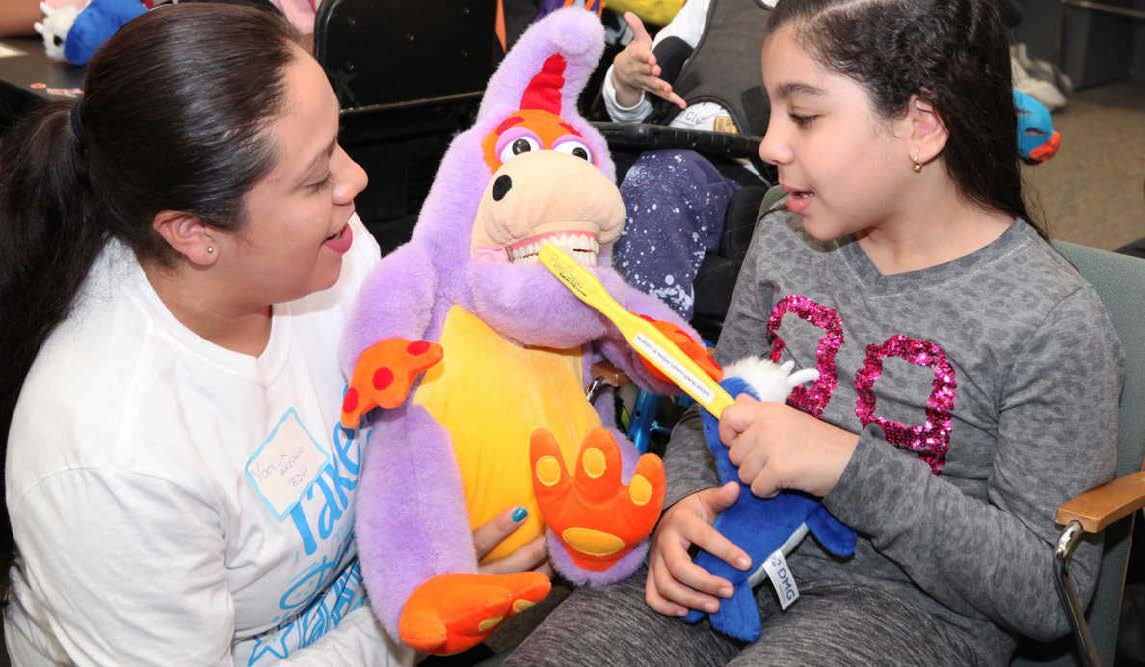
DON'T BRUSH IT OFF: Faced with other issues and priorities, individuals with disabilities and their caregivers often place oral care lower on the priority list relative to other issues, which further exacerbates problems with good oral healthcare.
Good oral healthcare is a critical component of maintaining overall good health and well-being. The number one healthcare crisis for individuals with disabilities is unequal access to competent oral healthcare, as compared to those without disabilities. Lack of preventative information and regular oral care leads to higher costs, higher burden of disease and cavities, an increase in more significant oral health problems and medical conditions related to, and caused by poor oral health. Faced with other issues and priorities, individuals and caregivers often place oral care lower on the priority list relative to other issues which further exacerbates the problem.
In addition, there is an overwhelming necessity for education around the important contribution good oral health plays in overall health and quality of life. The group is working with organizations such as the American Academy of Developmental Medicine and Dentistry, National Council on Disability, Special Care Dentistry Association, Special Olympics, Special Care Advocates in Dentistry, International Association for Disability & Oral Health, and many others, to elevate and increase the health literacy around this social justice issue that up until now, has not been sufficiently addressed or seen significant change. We ourselves, as well as caregivers, practicing dentists, dental students, hygienists, and related health professionals, must be made aware of this health care crisis within the disability community.
Project Accessible Oral Health is dedicated to improving the access to quality oral health care around the world and for the more than 57 million individuals with disabilities in the United States. Often, the individual and or their caregiver cannot find experienced, culturally competent practitioners willing to take them as patients, nor locate accessible facilities equipped to accommodate. As a result, they often cannot obtain the care they need.
Project Accessible Oral Health operates under The Viscardi Center's network of 501(c)(3) organizations, which educate, employ, and empower children and adults with disabilities. We implore everyone to join the conversation and help us choose where, when, by whom, and how our oral health care, and thus great overall health, is delivered. Follow our journey on Facebook facebook.com/ProjectAccessibleOralHealth
ABOUT THE AUTHOR:
Barbie Vartanian, is the Executive Director of Project Accessible Oral Health at The Viscardi Center, but her most important role is mother to her child with special needs.
CONNECT AND DISCOVER
Join EP's Facebook Community
EP's revamped Facebook page welcomes you to share stories, discover resources and connect with the special needs community. Parents and families with members with special needs benefit greatly from meaningful interaction with peers facing the same challenges and joys. Facebook has provided the EP readership community with a convenient and effective platform to communicate, ask questions, promote events and share special moments.
Connect, Share and Discover with EP facebook.com/exceptionalparentmag
Visitors can access the latest news and articles from recent issues of EP Magazine, and provide feedback and insight of their own. EP's Facebook page an open community group for parents, grandparents, family and friends of people with special needs family members. It's an ideal place for both parents and professionals to share information and resources.
Parents, teachers, academics and professionals that are willing to help each other by sharing knowledge and resources are a vital part of the EP community. Like us today!
MOBILE RECREATION PROGRAM HELPS STUDENTS (LITERALLY) THINK OUTSIDE THE BOX
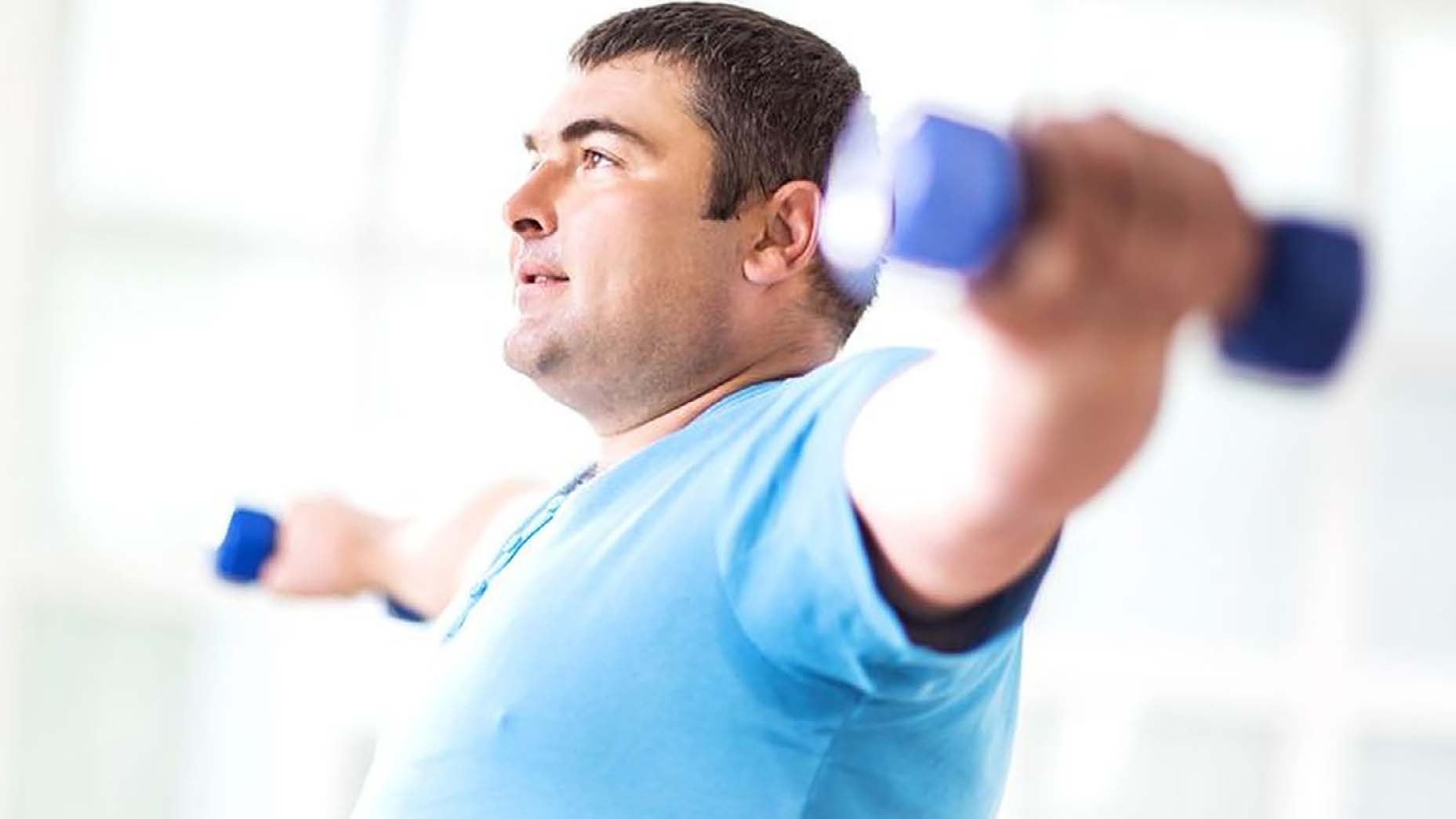
MUTUALLY BENEFICIAL: Not only did the students impact the lives of the individuals of Orange Grove Center but, more important, those individuals impacted each and every student in the Community Based Adaptive Fitness course.
BY NICOLE HARTY, ALLYNA KERLEY, MOLLY MELTON, CLAIRE MORRISON AND ABI WELCH
Research indicates that outside of the Special Olympics, most adults with intellectual disabilities do not meet the recommended amounts of physical activity necessary to improve health outcomes. This is due in part to a lack of access, and sometimes even a lack of opportunity to engage in inclusive recreational programming.
Through a community partnership between the Orange Grove Center (OGC) and the University of Tennessee at Chattanooga (UTC), OGC participants had the opportunity to experience how fun exercise could truly be.
This past Spring, students at the University of Tennessee at Chattanooga had the opportunity to prepare their clinical skills in a unique and practical way. Amanda Durall, an instructor in the Department of Health and Human Performance, developed an experiential class where students could work in a hands-on capacity with adults with intellectual disabilities in their local community. The course, Community Based Adaptive Fitness, emerged from a strong partnership with the Orange Grove Center, a local, nonprofit organization that provides a variety of services for individuals with intellectual disabilities.
The students spent the first three weeks of the course learning about the disability rights movement, using person-first language, applied behavioral analysis, and the community-based work of the center from the Orange Grove executive team. For the next 10 weeks, UTC students met twice a week for an hour with the individuals at their designated locations. Thanks to a grant from the University, students took their box of hula hoops, floor tape, bean bags, beach balls, parachutes, and other fun pieces of equipment to each site. What emerged from the box was surprising. Students were incredibly creative in their design of these play-based exercise programs. However, the crowd favorite was dancing! While these activities may not seem taxing to a neurotypical population, the focus of this program was to increase physical activity among this population through fun and functional activities.
This mutually-beneficial relationship between the OGC and UTC also gave undergraduate students the opportunity to interact with adults with differing abilities, in turn preparing them for their future professions in healthcare. Students from the course this past Spring are attending graduate schools for physical therapy, occupational therapy and public health. This course also showed students the importance of making sure every single person, regardless of ability, has an opportunity to participate, have fun, and feel valued. While this community partnership was an excellent experience for both OGC and UTC, it did not come without challenges. The students learned to navigate and overcome their primary barrier of communication. As the program progressed, they learned to adapt and communicate with participants in a manner that was specific and effective for each individual. Whether participants were nonverbal, deaf, or sometimes just difficult to understand, students flourished in their ability to effectively communicate with those whom they were serving, as well as their peer teams.
Throughout the program, it also became increasingly difficult to come up with new games and activities that would be engaging and challenging. As individuals mastered skills, most wanted to continue to be challenged, but given the limited space and resources, this proved to be another unique hurdle to overcome. At some sites, there were a handful of individuals that used assistive devices.
In the beginning weeks of the program, most individuals just assumed they could not participate. Students had to get creative in thinking of ways to engage individuals with walkers in all activities. Although it was occasionally difficult to come up with activities that were inclusive to all individuals participating, teams were effective at challenging and engaging everyone. Students also developed new approaches to motivating participants in ways that stretched their personal abilities and encouraged physical and emotional growth. The key was to challenge individuals without making them feel pressured into doing something they were not comfortable with.
Going into this, many students agreed that it was somewhat intimidating, because most did not know what to expect. Fears of how to lead the fitness classes each week, what activities to implement to keep the participants engaged, and how to successfully connect with participants began to circulate amongst the class. However, as each team worked together to meet the needs, interests and abilities of their participants, they began to find their stride. Often times they would arrive to their site with participants waiting to help them set up for the day. Other times, participants would already be playing in anticipation of the day's events. Over the semester, this course brought together each team of students to brainstorm ideas for fitness activities by thinking creatively and critically. Whether it be obstacle courses, dancing sessions, or group activities, each session fostered meaningful rela tionships between students, participants and OGC staff. As these relationships were strengthened and barriers of uncertainty were broken, it truly turned into an amazing learning opportunity that taught the students and the people of Orange Grove lessons that cannot be found in a traditional classroom. Students truly began to grasp the concept of social justice, the need for advocacy and the benefits of inclusion for improved health and well-being. Furthermore, students also began to see the immediate benefits of exercise in a special population.
The challenges and barriers that the students faced have forever changed their outlook of their future careers in healthcare. Not only did the students impact the lives of the individuals of OGC but, more important, those individuals impacted each and every student in the course. Students will no longer hesitate to serve or engage with an individual with an intellectual disability. They now look for those opportunities in their daily lives and plan to use their experiences to mold their character as future healthcare practitioners. They are better prepared to serve anyone that they may come into contact with and can effectively educate others on the need for inclusive healthcare and recreation for all people.
For more information on the course, contact: Amanda Durall, MPH, EP-C; University of Tennessee at Chattanooga, Department of Health and Human Performance; Email: Amanda-Durall@utc.edu; 423-425-1736. •